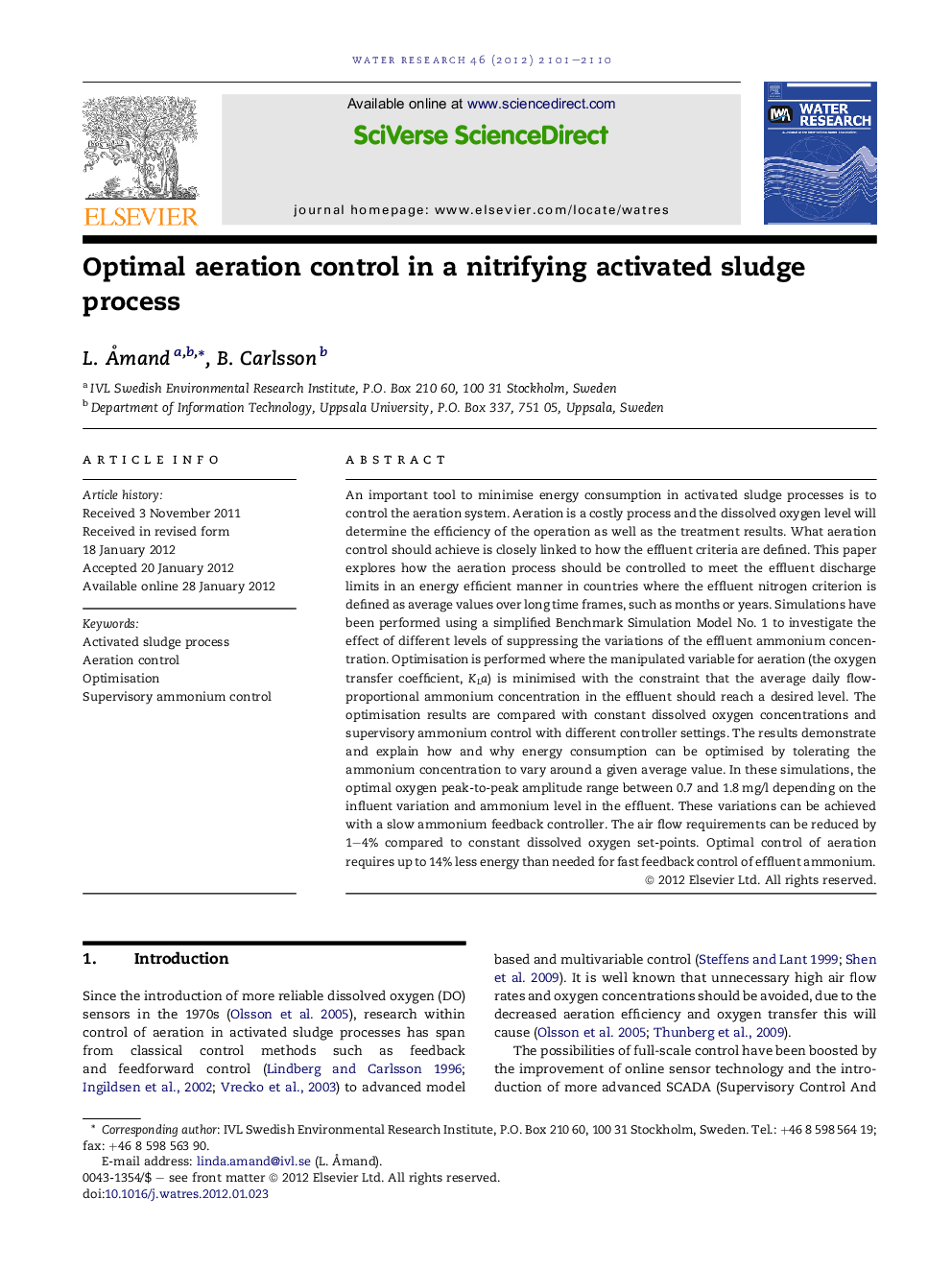| کد مقاله | کد نشریه | سال انتشار | مقاله انگلیسی | نسخه تمام متن |
|---|---|---|---|---|
| 4482913 | 1316873 | 2012 | 10 صفحه PDF | دانلود رایگان |

An important tool to minimise energy consumption in activated sludge processes is to control the aeration system. Aeration is a costly process and the dissolved oxygen level will determine the efficiency of the operation as well as the treatment results. What aeration control should achieve is closely linked to how the effluent criteria are defined. This paper explores how the aeration process should be controlled to meet the effluent discharge limits in an energy efficient manner in countries where the effluent nitrogen criterion is defined as average values over long time frames, such as months or years. Simulations have been performed using a simplified Benchmark Simulation Model No. 1 to investigate the effect of different levels of suppressing the variations of the effluent ammonium concentration. Optimisation is performed where the manipulated variable for aeration (the oxygen transfer coefficient, KLa) is minimised with the constraint that the average daily flow-proportional ammonium concentration in the effluent should reach a desired level. The optimisation results are compared with constant dissolved oxygen concentrations and supervisory ammonium control with different controller settings. The results demonstrate and explain how and why energy consumption can be optimised by tolerating the ammonium concentration to vary around a given average value. In these simulations, the optimal oxygen peak-to-peak amplitude range between 0.7 and 1.8 mg/l depending on the influent variation and ammonium level in the effluent. These variations can be achieved with a slow ammonium feedback controller. The air flow requirements can be reduced by 1–4% compared to constant dissolved oxygen set-points. Optimal control of aeration requires up to 14% less energy than needed for fast feedback control of effluent ammonium.
Figure optionsDownload high-quality image (98 K)Download as PowerPoint slideHighlights
► Optimal aeration is investigated assuming a mean effluent nitrogen level is required.
► Mathematical optimisation is performed where energy consumption is minimised.
► The optimal solution is compared to different ammonium feedback controllers.
► Near optimal performance can be achieved with a slow ammonium controller.
► A constant oxygen set-point is more energy efficient than fast ammonium feedback.
Journal: Water Research - Volume 46, Issue 7, 1 May 2012, Pages 2101–2110